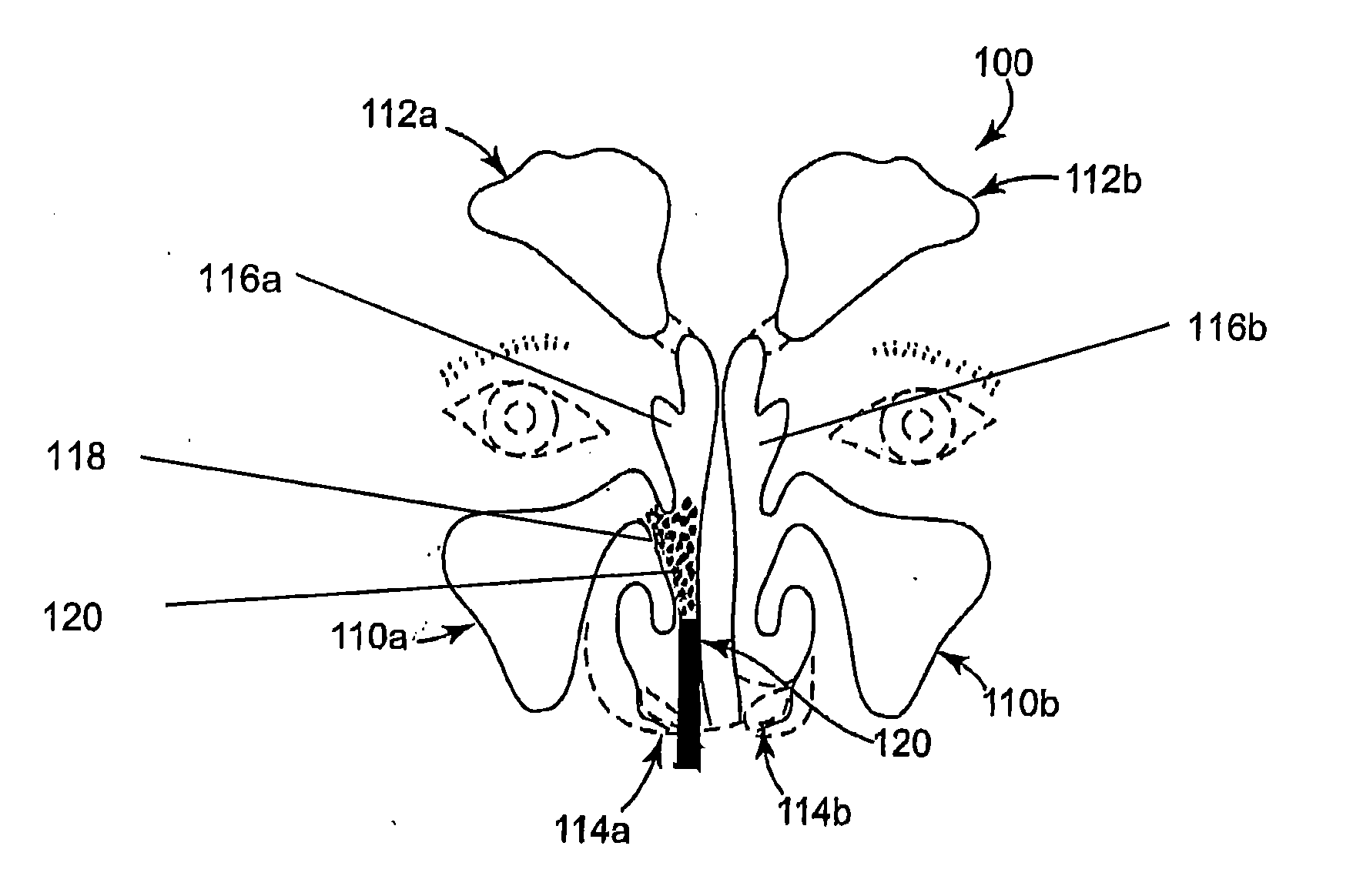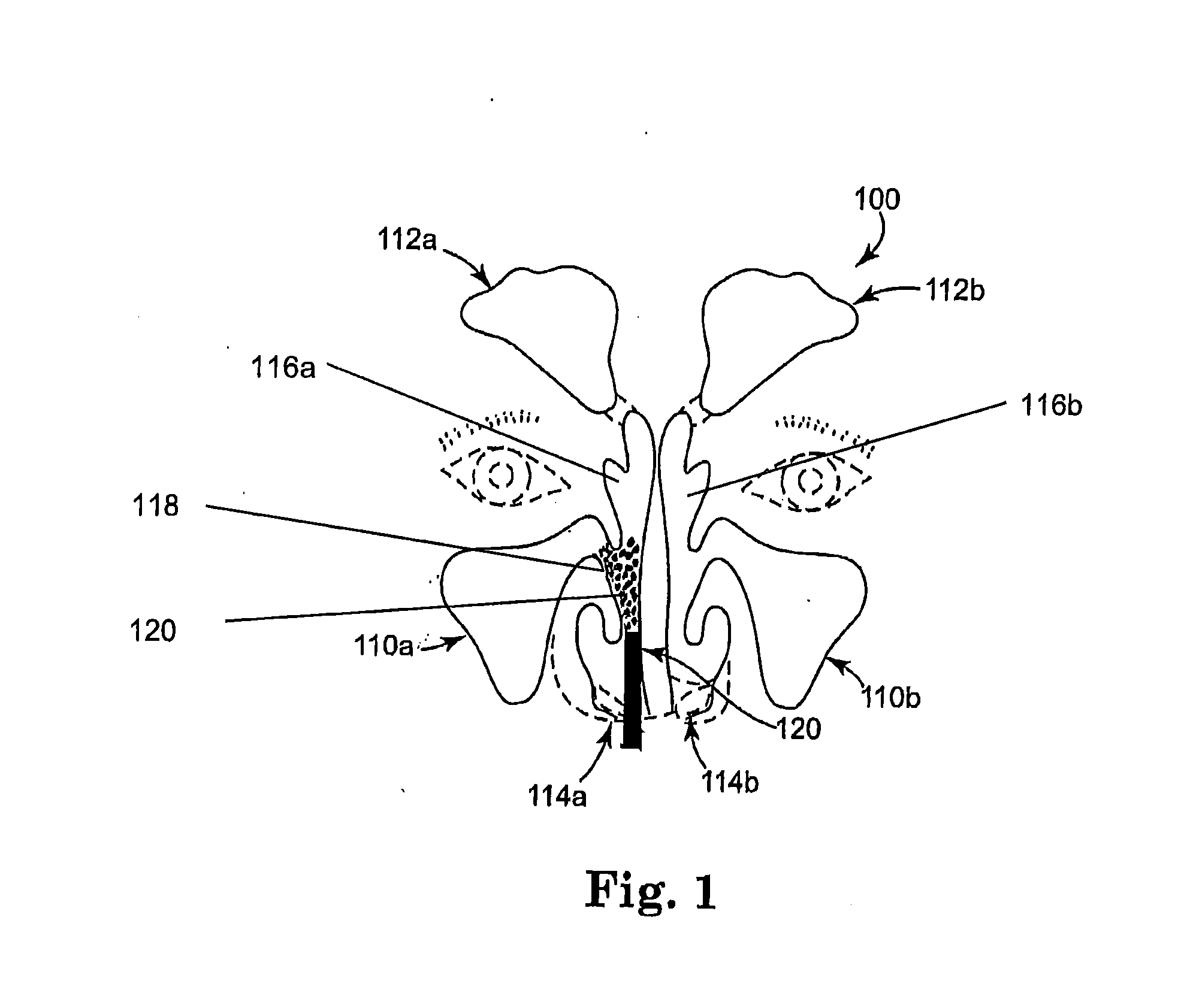Chitosan stenting paste
a technology of chitosan and stenting paste, applied in the field of biomaterials, can solve the problems of pain in doing so, and achieve the effect of less intrusion and pain
- Summary
- Abstract
- Description
- Claims
- Application Information
AI Technical Summary
Benefits of technology
Problems solved by technology
Method used
Image
Examples
example 1
Paste Formulations
[0062]A 3× PBS (pH 11-12) solution was prepared by dissolving PBS tablets in water and the pH was adjusted to pH 11-12 using 1N NaOH. Glycerol if used was then added to the PBS solution to form a PBS / Glycerol solution. To either the PBS solution or PBS / Glycerol solution were added varying amounts of dry ingredients, namely a 30-400 kDa molecular weight chitosan, glycerol phosphate disodium salt hydrate solid or polysaccharide and mixed at room temperature to form a paste. The paste was then gamma sterilized. All formulations except for formulation 4 formed a paste. Formulation 4 was initially liquid-like and subsequently became sticky and stringy. Table 1 shows the percentage of the ingredients in the total volume of liquid. Table 1 also shows the osmolality, viscosity and adhesion values for each formulation after sterilization.
SterileViscosityAverage(Pa · s.) atSterileChitosanGlycerolBGlyPhPolysaccharideOsmolalityShear RateAdhesionFormulationHCl (%)(%1)(%)(%)(mOS...
example 2
[0063]0.6 ml of 10% glycerol and 5.4 ml of 3× PBS solution (pH 11) as prepared in Example 1 were mixed in a 10 ml syringe. To this PBS / Glycerol solution was added varying amounts of glycerol phosphate, chitosan HCL and hydroxypropyl cellulose (HPC) in solid form. After all the ingredients in the syringe were fully mixed at room temperature, the resultant paste was gamma or E-beam sterilized. The formulations are shown below in Table 2. All the formulations formed a paste at room temperature. Table 2 shows the percentage of the various ingredients reported as a percentage of the total volume of liquid. The osmolality, viscosity and adhesion values for each formulation are shown below in Table 3 and are values after sterilization.
TABLE 2GlycerolChitosanHPCPhosphateFormulationHCL (%)(%)(%)148.531151342161031171031.5181322
TABLE 3SterileSterileViscosityViscositySterileSterile(Pa · s.)(Pa · s.)AdhesionAdhesionat Shearat ShearForceForceOsmolalityRate 221 (1 / s)Rate 221 (1 / s) E-(grams)(grams...
example 3
Antimicrobial Properties
[0064]Formulations 14, 15 and 16 from Table 2 were evaluated to determine their antimicrobial activity against four common bacterial strains (S. aureus, S. epidermis, E. coli and P. aeruginossa using a zone of inhibition screening technique.
[0065]The four bacteria were grown on Muller Hinton agar plates. Under sterile conditions, approximately 0.1 to 0.2 ml of each formulation was directly placed on the agar plates. The agar plates were incubated at 35° C. for 12 hours. After incubation, the plates were observed for bacterial growth. The use of the term “zone of inhibition” denotes an area around the formulations where bacterial growth was inhibited. The term “bacteriostatic” denotes that the bacteria grew to the edge of the formulation but no further growth was observed. In other words, the term “bacteriostatic” refers to an ability to prevent bacteria from growing and multiplying but possibly not killing them.
[0066]The results shown in Table 4 below are bas...
PUM
| Property | Measurement | Unit |
|---|---|---|
| Time | aaaaa | aaaaa |
| Force | aaaaa | aaaaa |
| Mass | aaaaa | aaaaa |
Abstract
Description
Claims
Application Information
 Login to View More
Login to View More - R&D
- Intellectual Property
- Life Sciences
- Materials
- Tech Scout
- Unparalleled Data Quality
- Higher Quality Content
- 60% Fewer Hallucinations
Browse by: Latest US Patents, China's latest patents, Technical Efficacy Thesaurus, Application Domain, Technology Topic, Popular Technical Reports.
© 2025 PatSnap. All rights reserved.Legal|Privacy policy|Modern Slavery Act Transparency Statement|Sitemap|About US| Contact US: help@patsnap.com


